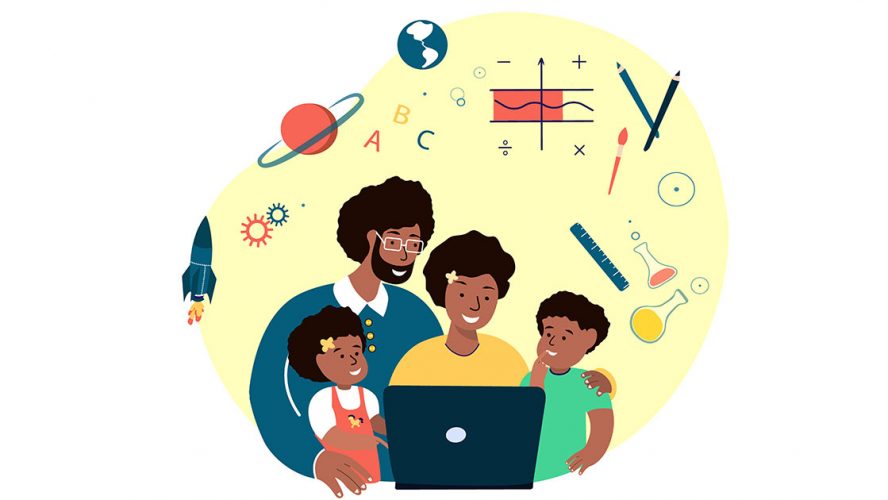
Peter Dallas Finch
Assistant Superintendent, West Valley School District 208
Educators have always said: “The parent is the child’s first teacher.” During the COVID-19 pandemic, the importance of family engagement is magnified.
In my work as a school administrator in a rural school district in Washington, I saw amazing growth in the use of digital tools for literacy instruction at home.
Teachers from our six elementary schools have always worked together in grade-level teams to coordinate curriculum and instruction. When we had to pivot to remote learning, teachers were willing to share. One kindergarten teacher developed a Bitmoji classroom that she shared with others. It had links to multiple online tools that kindergarten students from every school could access at home.
Every student in West Valley is issued a Chromebook and, if needed, a cellular hot spot for internet access. This is necessary, but not sufficient to ensure that every student will access distance learning. Family engagement is key.
Going online
Jesenia Larios is a bilingual home visitor for school-age children at Mountainview Elementary. Prior to distance learning, Larios had developed positive relationships with families, so, when our children had to access their learning remotely, she worked effectively with families to help them understand how to help their child log in and monitor their progress.
She helped parents engage their child with literacy activities at home. With reading, parents and children can both “serve and return” — question and answer — to build brain power.
Amber Caffrey, kindergarten teacher at Mountainview, emphasizes family engagement to support literacy. She says, “Literacy is such a broad subject. You have to rely on parents. It’s so important for parents to read to their kids nightly.”
For remote learning, she developed a “Choice Board” inside our learning management system where students could choose their online activities. She posted videos of herself that students watched with family members to learn various aspects of literacy, such as letter names and letter sounds, rhyming games and story retell.
Like driving
Through my participation in a national cohort sponsored by AASA, The School Superintendents Association, I learned about the complexity of literacy. Nell Duke, from the University of Michigan, presented to our Early Learning Cohort and explained that literacy can be compared to the complexity of driving.
Variety of texts are like the variety of road conditions. Reading mechanics are like the driver and the vehicle. And, the structure of literacy — such as story structure — is the road map.
Caffrey says, “Parents need to understand that the elements of literacy include more than reading words. You can use a picture book to teach the structure of a story. Then, kids can use that knowledge when it is time for them to write their own stories.”
COVID-19 required educators to learn technology applications to add to their instructional toolbox. But the most important learning for educators has been that family engagement is essential for student success.

